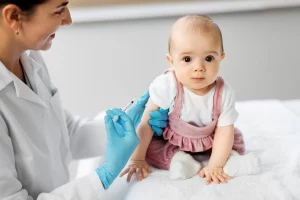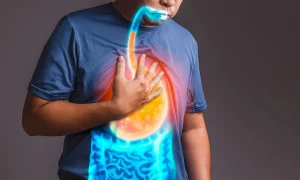The U.S. Food and Drug Administration on Saturday approved Johnson & Johnson’s single-shot coronavirus vaccine for emergency use after its advisory panel unanimously backed the vaccine a day earlier.
Adding a third vaccine to the country’s arsenal will help boost the nation’s limited supply of the two authorized shots, from Pfizer and Moderna. The first 20 million doses from J&J should be delivered by the end of March, the Washington Post reported.
“It’s a relatively easy call; it clearly gets way over the bar, and it’s nice to have a single-dose vaccine,” said Eric Rubin, an infectious diseases specialist at the Harvard T.H. Chan School of Public Health and a member of the FDA advisory panel. He told the Post that, “it’s a bit challenging about how to use it clinically right now, but the demand is so large, it clearly has a place.”
Infectious disease experts welcomed the approval.
“The addition of a third COVID-19 vaccine substantially reduces the time it takes the U.S. to reach herd immunity — when a high enough proportion of the population is immunized and we can disrupt the spread of this disease,” said Dr. Lisa Lee, a public health expert who specializes in infectious diseases.
“Getting 75-85% of the population vaccinated will be easier with this additional vaccine option, especially because it, unlike the first two, does not require a complex frozen or ultra-frozen transport and storage system, and requires only one shot, instead of the two required by the others,” said Lee, who is associate vice president for research and innovation at Virginia Tech.
“Stopping the spread of the virus is more important than ever,” Lee said. “Not only because it will prevent severe illness and deaths, but because the more the virus is transmitted, the more likely it is to develop mutations that can make it more contagious and more lethal. We have already seen this is the new, more infectious variants that are now widespread in the U.S. New variants are likely to eventually evade the vaccines, so if we don’t stop this now, we will be dealing with COVID-19 restrictions on our lives for a very long time.”
FDA briefing documents showed the J&J vaccine had an overall efficacy rate of 72 percent in the United States and 64 percent in South Africa, where a concerning variant emerged in the fall and has since spread to the United States, The New York Times reported.
The vaccine was particularly effective at preventing severe illness or death: It showed 86 percent efficacy against severe forms of COVID-19 in the United States, and 82 percent against severe disease in South Africa. None of the nearly 22,000 vaccinated people in the trial died of COVID-19.
The FDA’s analysis estimated that the vaccine has an efficacy rate of 74 percent against asymptomatic infections, which suggests that it may also help reduce the spread of the virus by vaccinated people, the Times reported.
Nursing homes see steep drop in COVID cases, deaths
In a hopeful turnaround during a long pandemic, U.S. nursing homes that were once the epicenter of coronavirus infections are now seeing both cases and deaths fall steeply as the country’s vaccination rollout starts to take hold.
From late December to early February, new cases among U.S. nursing home residents fell by more than 80 percent, nearly double the rate of improvement in the general population, the Times reported. The downward trend in deaths was even more heartening: Even as fatalities spiked overall this winter, deaths inside nursing homes have dropped by more than 65 percent.
“I’m almost at a loss for words at how amazing it is and how exciting,” Dr. David Gifford, chief medical officer for the American Health Care Association, which represents thousands of long-term care facilities across the country, told the Times.
The good news comes not a moment too soon: Since the pandemic began, the coronavirus has raced through some 31,000 long-term care facilities in the United States, killing more than 163,000 residents and employees and accounting for more than a third of all virus deaths since the late spring, the Times said.
But with the arrival of vaccines, which were sent to long-term care facilities starting in late December, new cases and deaths in nursing homes have fallen steeply, outpacing national declines, the Times reported. It offers an early glimpse of what might be in store for the rest of the country, as more and more people get vaccinated.
“If we are seeing a robust response with this vaccine with the elderly with a highly contagious disease, I think that’s a great sign for the rest of the population,” Giffords told the Times.
About 4.5 million residents and employees in long-term care facilities have received at least one dose of the vaccine, according to the U.S. Centers for Disease Control and Prevention, including about 2.1 million who have been fully vaccinated.
Now, new cases in nursing homes are at their lowest point since May, when the federal government began tracking such data, the Times said.
“What is certainly surprising to me is how quickly we’re seeing this,” Dr. Sunil Parikh, an associate professor of epidemiology and medicine at Yale School of Public Health in Connecticut, told the Times.
Pfizer, Moderna say big jump in vaccine supply coming
Officials from both Pfizer and Moderna delivered reassuring news about their COVID-19 vaccines to Congress this week: There will be a sharp rise in the delivery of doses in the coming month, and they will be able to provide enough doses to vaccinate most Americans by summer.
By the end of March, Pfizer and Moderna expect to have delivered a total of 220 million vaccine doses to the U.S. government, a significant uptick from the roughly 82 million doses that the U.S. Centers for Disease Control and Prevention says have shipped so far.
“We do believe we’re on track,” Moderna President Stephen Hoge told a House subcommittee after describing how the company has ramped up production. “We think we’re at a very good spot.”
By summer, Pfizer and Moderna said they expect to complete delivery of 300 million doses each, while J&J aims to provide an additional 100 million doses. That would be more than enough to vaccinate every American adult, the Associated Press reported.
Two other manufacturers, Novavax and AstraZeneca, have vaccines in the pipeline and anticipate eventually adding to those totals, the AP said.
When asked whether they face shortages of raw materials, equipment or funding that would delay vaccine deliveries, all of the companies testified that they had enough supplies and had already addressed some early bottlenecks in production.
“At this point, I can confirm we are not seeing any shortages of raw materials,” said Pfizer’s John Young.
Even with no further interruptions, other issues could still delay or block the United States from vaccinating 70% to 80% of its population — the critical threshold needed to neutralize the spread of coronavirus — by summer.
As of Saturday, over 70.4 million people had received at least one dose of a COVID-19 vaccine, including 22.6 million people who have received both doses, according to the CDC.
A global scourge
By Saturday, the U.S. coronavirus case count passed 28.5 million while the death toll passed 510,000, according to a Times tally. On Saturday, the top five states for coronavirus infections were: California with over 3.5 million cases; Texas with more than 2.6 million cases; Florida with nearly 1.9 million cases; New York with over 1.6 million cases; and Illinois with nearly 1.2 million cases.
Curbing the spread of the coronavirus in the rest of the world remains challenging.
In India, the coronavirus case count was more than 11 million by Saturday, a Johns Hopkins University tally showed. Brazil had over 10.4 million cases and nearly 253,000 deaths as of Saturday, the Hopkins tally showed.
Worldwide, the number of reported infections passed 113.5 million on Saturday, with over 2.5 million deaths recorded, according to the Hopkins tally.
More information
The U.S. Centers for Disease Control and Prevention has more on the new coronavirus.
SOURCES: Washington Post; The New York Times; Associated Press
Source: HealthDay
Copyright © 2025 HealthDay. All rights reserved.

















